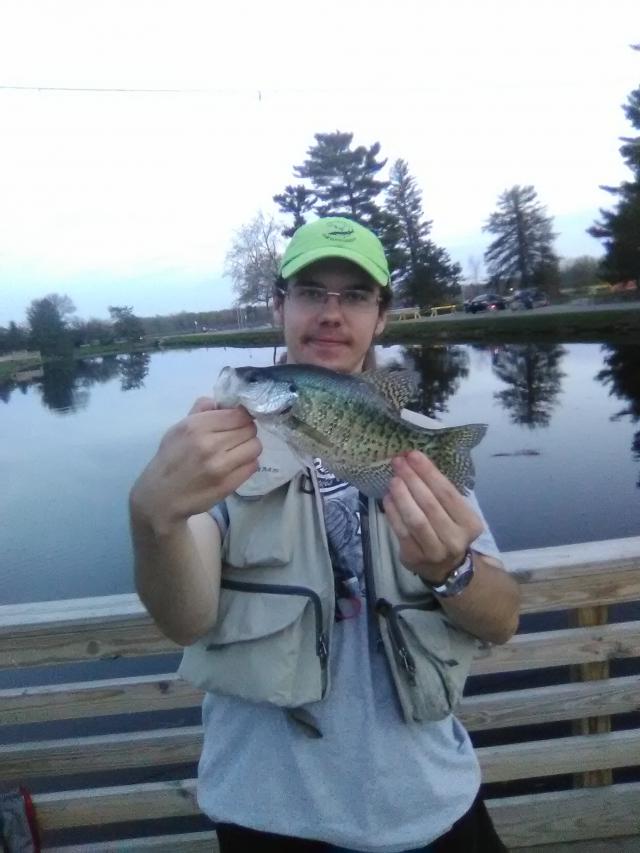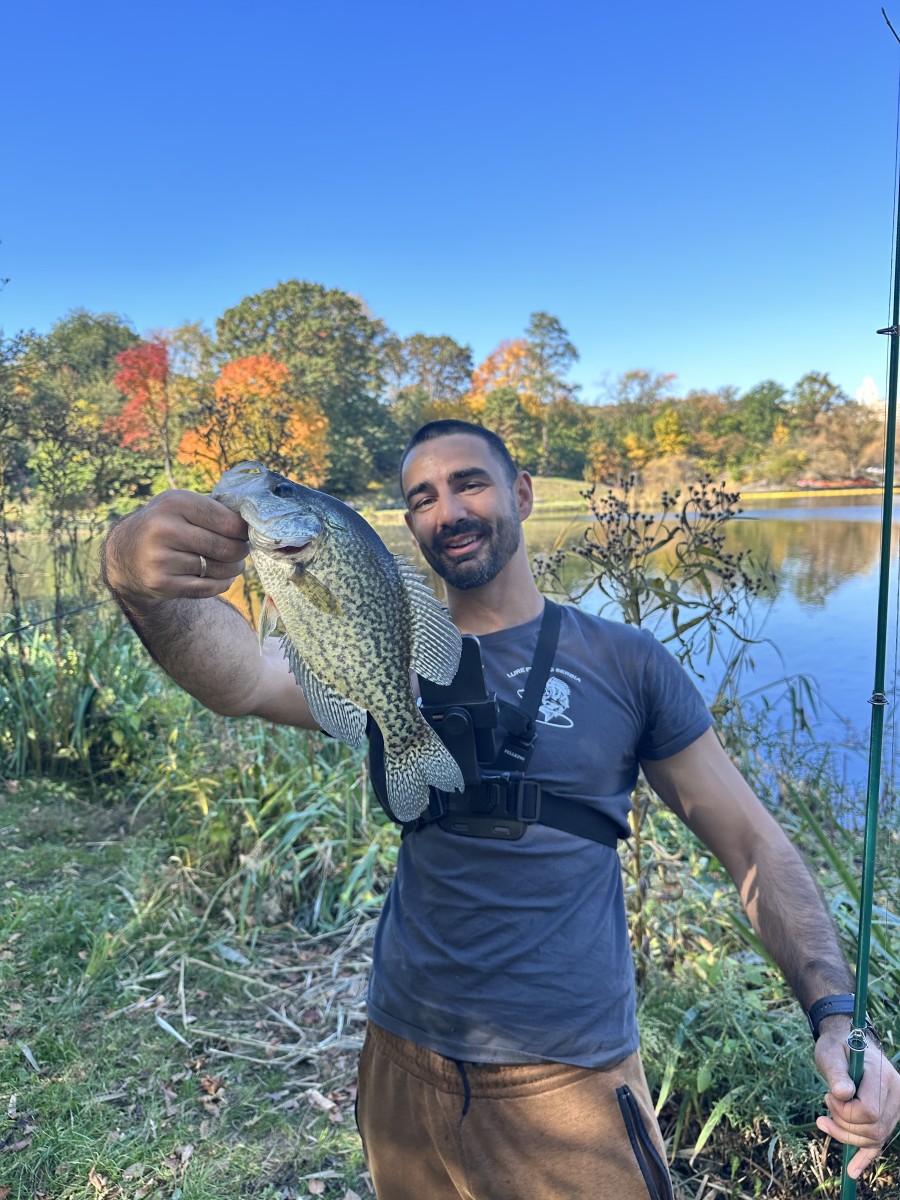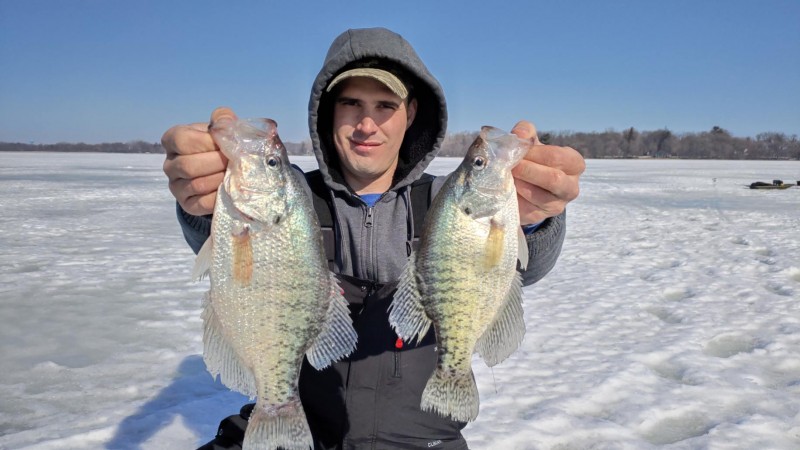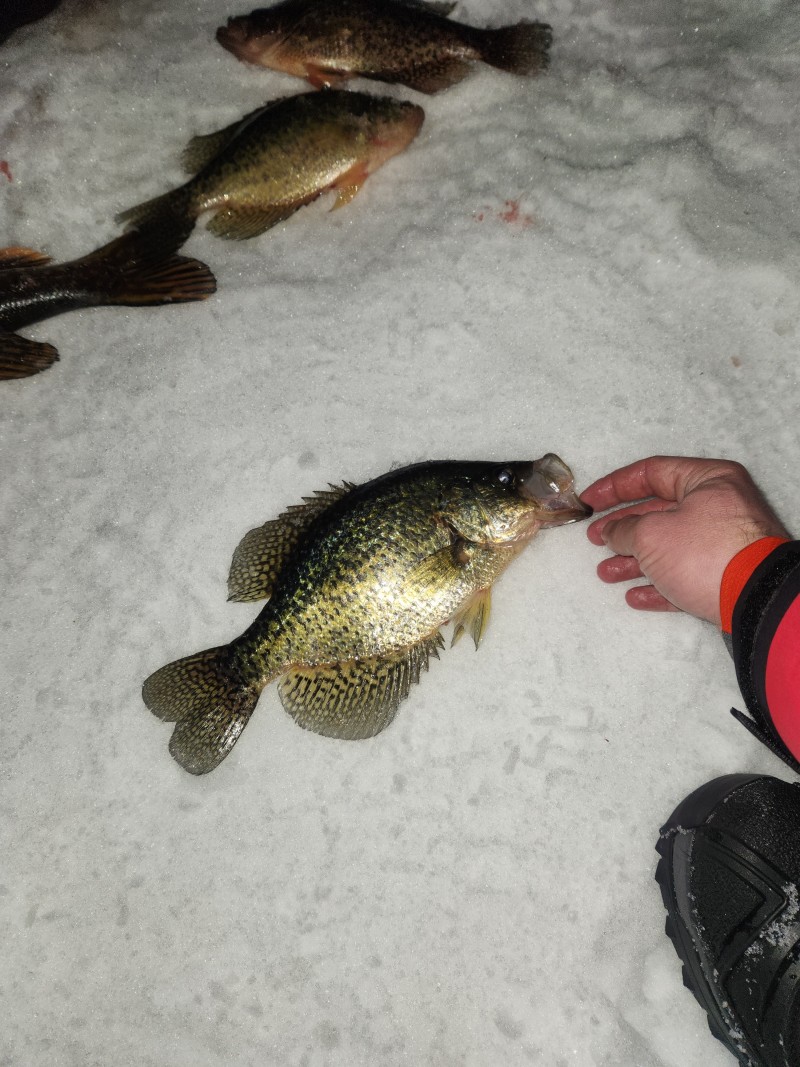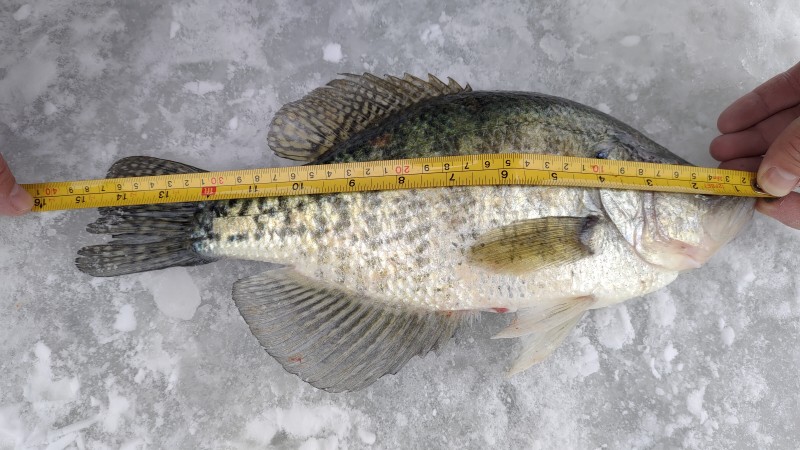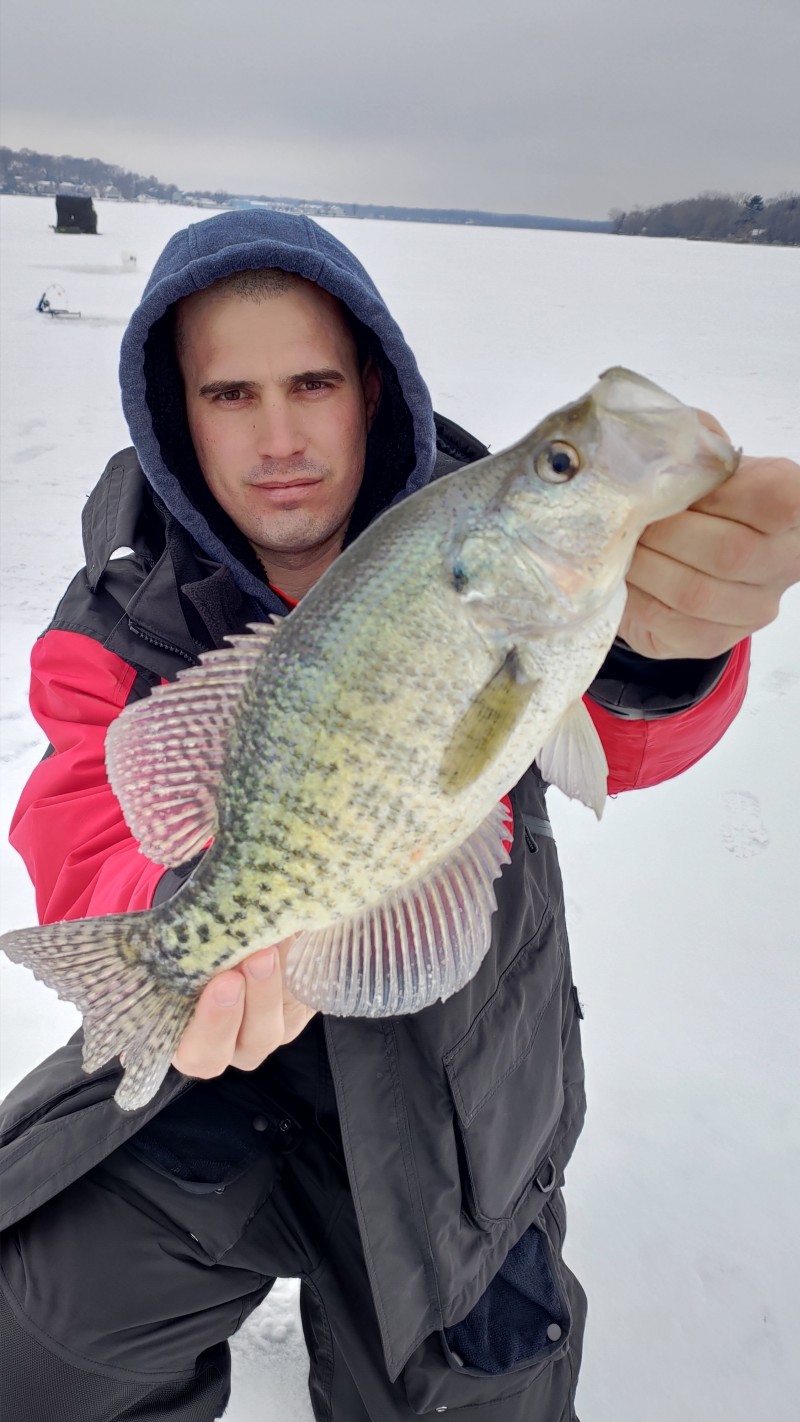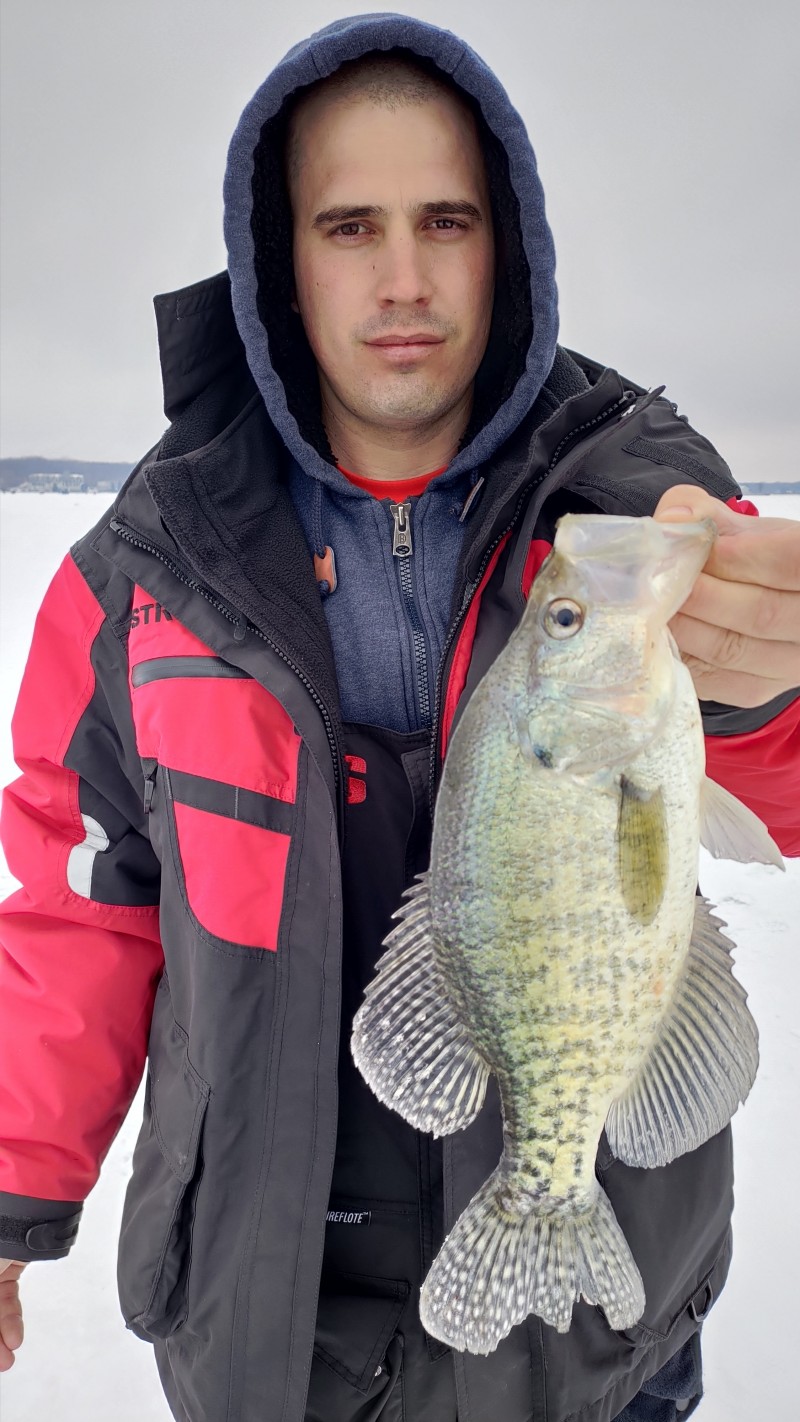White crappie
(Pomoxis annularis)
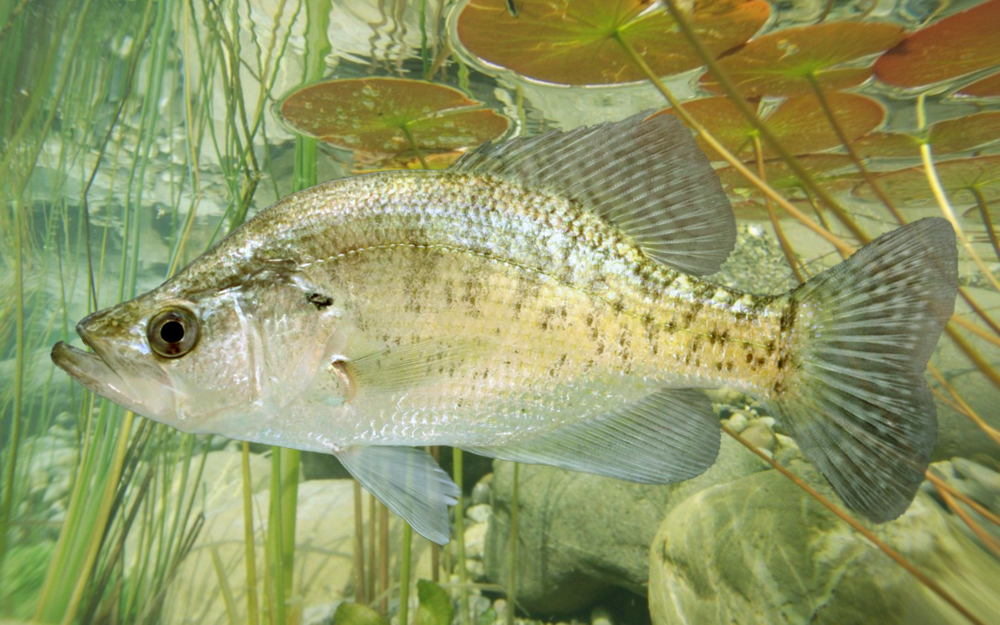
Classification
General data
White crappies are morphologically similar to black crappies. They have 5–10 dark vertical bars along their bodies, rather than the randomly scattered spots like the black crappie. The white crappie has a silvery color with green or brown shades along its back, with dark lateral bars along its side, and a white belly. The dorsal fins of the white crappie starts farther back on the body than those of the black crappie. The anal fin is about the same size as the dorsal fin.
The white crappie has six dorsal fin spines, whereas the black crappie has seven or eight dorsal fin spines. White crappies are also slightly more elongated than black crappies.
The white crappie is a deep-bodied fish with a flattened body, or a depth that is one-third of the length of the fish. White crappies have spinous rays and ctenoid fish scales found in advanced teleosts. The exposed part of the scale has tiny tooth-like projections (cteni). Both species of crappies have a terminal mouth position with many small, conical teeth in two rows along the mouth and are called cardiform because they resemble a tool used for wool carding. Crappies belong to the family Centrarchidae in the infraclass Teleostei, which is one of three infraclasses in the class Actinopterygii.
The white crappie rarely exceeds 2 pounds (0.91 kg), and typically lives 2–7 years. The species is generally about 9–10 inches (23–25 cm) in length as an adult. The current for all-tackle fishing world record for a white crappie is 2.35 kg (5.2 lb).
Distribution
White crappies are native to the Great Lakes, Hudson Bay, and the Mississippi River basins expanding from New York and southern Ontario westward to South Dakota and southward to Texas. This species has a large geographic range in the United States and currently has a stable population. Currently, this species is listed as the least concern species for conservation efforts.
Habitat
White crappies can be found in large rivers, reservoirs, and lakes. White crappies are more tolerant of turbid (murky) waters than black crappies. The white crappie usually outnumbers the black crappie in turbid waters and in areas with little rooted aquatic vegetation.
White crappies are most commonly found in rivers and low-velocity areas such as pools and backwaters of rivers. They are most abundant in lakes and reservoirs larger than 5 acres. The white crappie can be found in the open water during the mornings and evenings, but during the day this species is found in shallower, quiet waters (6–12 feet (1.8–3.7 m) deep) surrounded by structure.
